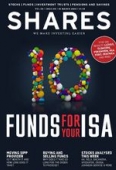Archived article
Please note that tax, investment, pension and ISA rules can change and the information and any views contained in this article may now be inaccurate.
Why does it take so long to buy and sell a fund?

Have you ever invested in a fund and wondered why it doesn’t immediately show up in your portfolio as per stocks, investment trusts and exchange-traded funds (ETF)?
Sadly it typically takes a day for your fund ‘buy’ order to be processed and the investment to appear in your ISA, SIPP (self-invested personal pension) or other account. The same applies for ‘sell’ orders and leaving your portfolio.
Stocks, investment trusts and ETFs allow transactions in real-time pricing so you can see at what price you are transacting at before you invest.
Open-ended funds are forward priced. This means unit trusts and Oeic funds are priced only once a day.
When someone places an order, it will trade at the price on the next valuation point, which could be up to 24 hours later.
In rare cases for funds with illiquid assets, the pricing could occur less regularly in either a week or a month.
MORE EFFICIENT PROCESSING
‘The advantage of forward pricing is that it enables the fund manager to manage cash flow efficiently as there is only one aggregated amount taking into account all of the buys and sells in a period,’ says Ryan Hughes, head of active portfolios at investment platform provider AJ Bell.
While this method can be tedious for investors, forward pricing helps fund managers efficiently process large numbers of small transactions every day, which is particularly helpful with large funds.
The price of a fund is determined by the value of its assets, which is then divided by the number of units in issue.
WHY IS THE BID/OFFER SPREAD IMPORTANT?
Investors should pay close attention to the bid/offer spread as this can reflect how easy it is to buy and sell units in a fund.
The bid is the price investors get when selling a unit and the offer is the price that investors pay for a unit, while the spread is the difference.
The bid/offer spread on a fund is purely a function of the dealing costs and is not related to its popularity or size.
Unit trusts also have a bid/offer spread but Oeics are single priced. The latter have a mechanism called ‘swing pricing’ which occurs when a fund provider adjusts the net asset value of a fund in order to pass on the costs of trading to individuals that are buying and selling within their accounts.
It is designed to protect longer-term investors from having the value of their accounts eroded by the transaction activity of others within the same fund.
Important information:
These articles are provided by Shares magazine which is published by AJ Bell Media, a part of AJ Bell. Shares is not written by AJ Bell.
Shares is provided for your general information and use and is not a personal recommendation to invest. It is not intended to be relied upon by you in making or not making any investment decisions. The investments referred to in these articles will not be suitable for all investors. If in doubt please seek appropriate independent financial advice.
Investors acting on the information in these articles do so at their own risk and AJ Bell Media and its staff do not accept liability for losses suffered by investors as a result of their investment decisions.
Issue contents
Big News
- Virgin Money results beat forecasts but doubts over ability to perform
- Lithium miner Bacanora prepares for substantial fundraise
- Greggs’ nourishing performance
- How did investors react to the latest batch of FTSE 100 results?
- Will there be a bidding war for Sky?
- RIT Capital Partners reveals stellar gains since 1988’s flotation
- Triple Point eyes listing upgrade and £200m new cash
- IntegraFin to be valued at c£650m at IPO
- Threads expert Coats impresses on margins and profit guidance
- Productivity growth hits its highest rate since the financial crisis

 magazine
magazine









